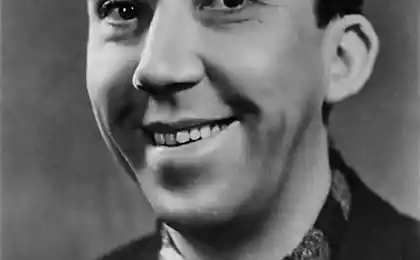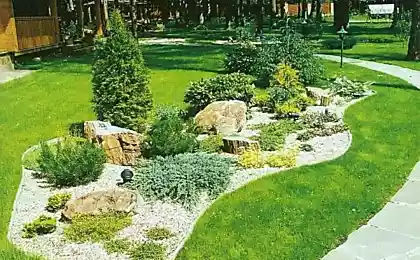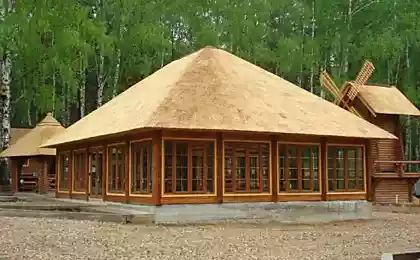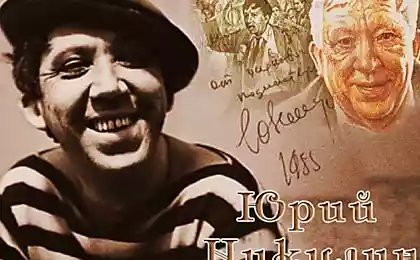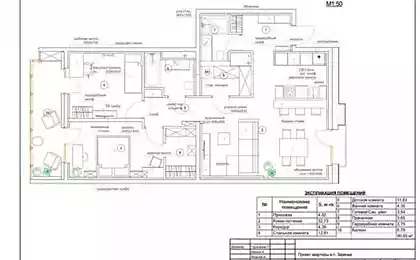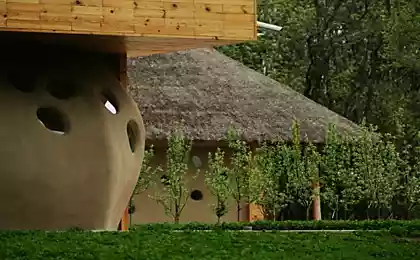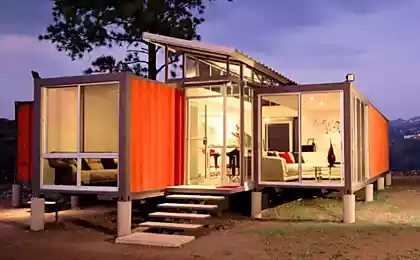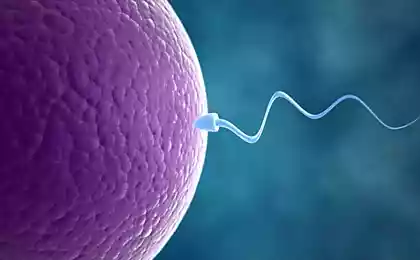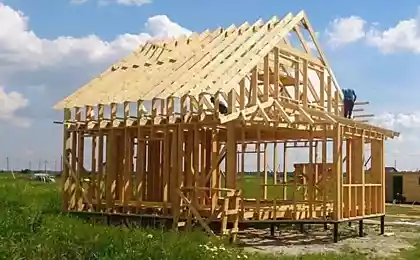636
Yuri Lapin: the World is building skyscrapers and houses out of straw
Eleven million eight hundred eighty four thousand eight hundred ninety
Professional interest – path, not only scouts. Scientists, specialists of all fields, art historians, collectors traveling the world hoping to learn something new in the cause to which they dedicated his life. Among such professionals is Yuri Nikolaevich Lapin designer, physicist, author of two books, the academician of the International Academy of Ecology, man who has devoted more than twenty years of his life studying the issues of creating a ecological and economical housing. And most importantly — an active traveler.
Eighty nine million nine hundred seventy eight thousand sixty one
— Yury Nikolaevich, how you helped your journey?
They convinced me of the correctness of my research. 20 years ago I asked a naive question: what should be the thickness of the walls to reduce heat loss in your house to zero (not to zero, and the equality is inevitable of home heat releases and heat losses of the house — approx.Yuri Lapin)? When my colleagues heard my reasoning is that the house may not be heated, they twisted a finger at a temple. Now these thoughts, solutions found practical expression throughout the world. The peak of interest in the topic arose during the energy crisis of 1973-74, when the Arab countries declared an oil embargo to the West, which supported Israel's aggression, and then has raised the price of oil.
In America, houses without heating systems, called "zero" in Europe, is "passive". The cost of energy in the Old and New world best convinces people of the need to create such housing for heating which would have enough human warmth and warmth of the hearth. For example, quietly sitting person has a heating power of 120 watts. Together, these dissipation reaches a significant amount, comparable to the power of heating systems. But the main secret, of course, not in person, but in the principle of construction of the housing.
— It's probably something from the field of nanotechnology, for which our government has decided to hit…
— Sometimes the solution of complex technical and social issues are on the surface. The construction of cheap and efficient houses – example. The best material for them under our feet, especially here in the Krasnodar region.
This straw. Or nanosolar – as you wish. Once our ancestors has used it in building their homes – mixed with clay, were covering the roof. And our perception is that they have become synonyms of the old Testament backwardness. But I would call straw – a gift from God. Stock the annual harvest of this material in Russia, every year would be enough for two housing programs for the construction of 800 million m2 of housing — five times more identified as the cherished goal of the national project "affordable housing" 140 million m 2, about 800 million tons of rye and wheat straw of different cereals.
Seventy nine million nine hundred eighty seven thousand five hundred forty seven
The material is gratuitous, his harness on the sidelines instead of actively use. He has a great thermal, acoustic, construction, environmental and biological characteristics. At a density 80 - 100 kg per cubic meter coefficient of thermal conductivity of 0.05, four times better than wood! For comparison, brick – 0,7, concrete is 1.8. The cost of such material you can not even compare — penny. Plastered straw does not burn, does not rot, if the house is solid roof and no outright leaks. Another plus is the durability, the service life of such houses is up to 500 years. Of straw, by the way, are built and baths. Straw "breathes" much better than wood, has a great porozumienie properties, the mechanism of which is still not fully understood.
— Really impressive. The only thing that spoils the reputation of the straw – fairy tale about three little pigs, where, as you know, a house of straw overawed by the wolf…
— The house made of straw began in America, where many traditionally grown crops. To this day people serve as great houses built a hundred years ago. And no the wolf is not afraid of them. In a single-storey frameless straw bale homes standard thickness (0.5 m) perform the role of bearing structures. The bales themselves are pretensioned, so no time is spent on shrinkage due to pre-stress the walls with metal fittings.
The construction of a two story house requires an increase in the thickness of the straw walls up to one meter, or increasing the density (degree of compression) bales. Currently known five-story thatched houses. Frame-and-straw technology number of storeys is limited to the carrying capacity of the frame, i.e. it's possible to build even a straw skyscrapers. In the USA there is a project 40-storey thatched house with a combined concrete-metal frame.
Exterior and interior trim does not restrict – any material that for lack of funds. People build mansions, small cottages and modest houses for a symbolic price. For the most incredulous guests one of my friends left on the second floor "window transparency" — a glassed-in wall, behind which can be seen what the house is built.
Once again, back to the history of pigs. One of the world's criteria of reliability of the building – protection against bullets. So the bullet gets stuck in the straw at a depth of 15-20 centimeters. And in the history of the Cossacks of the many examples of the use of this knowledge for military purposes: the Cossacks often allowed carts of straw (hay less dense material) ahead of the attacker.
— Yes, the house is a fortress for all occasions. Well, and where they build today such a warm and affordable home?
— Around the world. Austria, Germany, Belarus, USA, Canada, China, England, Scandinavia, Australia, Ukraine, Romania, Mongolia, Turkey, Mexico... More to continue?
By the way, in China over the period 1998 to 2004 was 606 built thatched houses and three schools. Safety requirements for schools around the world the high school building from straw not only in China but also in USA.
Please note – the house of straw building in cold climates, and in hot. In such houses warm in winter and cool in summer. And everywhere the cost of construction is much less. Heating a house out of straw the cost is 3-4 times lower than the brick. If desired, you can create and "zero" house, additionally the money spent will come back to you due to the complete abandonment of expensive energy.
— Probably, it is still expensive?
— Illusion. Modern technologies allow to spend for these purposes is not so much money. For example, according to German experts, the additional cost of building "zero" at home has decreased in Germany since 1991, seven times, down from the original $350/m2, to about $50/m2 in 2001. Additional costs for the construction of "zero" homes are falling in Germany by 10-20% per year.
Foreign experts appreciate the now more expensive energy-efficient homes in 8%, including additional insulation costs 3%, for the ventilation system — 2%, better Windows and 1% for other activities — 1.5%. For the conditions of Central Russia, the rise in the construction of "zero" homes can be assessed as $75/m2. An additional amount of $15,000 during the construction, for example, cottage 200 m2 total area.
— Yury Nikolaevich, was the final, main question. Are there any enthusiasts of construction of such houses in Russia? And through what difficulties they have to go through?
— Cheap house of straw – today a lot of enthusiasts and just normal people who expect life in their own home. These homes are increasingly popular for the reasons which I have already spoken.
Complexity in the organization of the harvesting straw bales: to find the pick-up, make the finished material to the construction site and to protect him from the cows. In the villages today often drive cars, sell hay in blocks. So it is possible to negotiate and for the manufacture of blocks of straw.
The construction difficulty is not. Straw house is being built faster and require less labor than brick or concrete, the construction can be carried out year-round. To build (to help) you can even children, no special skills and techniques are required. Time shrinkage is not necessary: it was built in two months, from and live.
The commissioning of a house is now easier, as there was the SNP scrapped, however, with a foreign, with all their mistakes and errors.
As for the mass construction, that is, with the involvement of the construction industry – problems of an economic nature. The house is fundamentally cheap, and hence, their profitability is significantly inferior to the classic – from brick and concrete. Although there will always be idle builders ready to build such houses at the price of palaces, and with the excuse that it's environmentally friendly home and should be more expensive. Therefore, at this expensive stage of development of housing construction in Russia should increasingly rely on their own, even modest construction talents. It is impossible to keep up with the world, even under the condition that the gas and oil reserves, Russia is still significant.
Source: svoya-izba.ru/2014/05/05/yurij-lapin-mir-stroit-neboskreby-i-solomennye-doma/
Professional interest – path, not only scouts. Scientists, specialists of all fields, art historians, collectors traveling the world hoping to learn something new in the cause to which they dedicated his life. Among such professionals is Yuri Nikolaevich Lapin designer, physicist, author of two books, the academician of the International Academy of Ecology, man who has devoted more than twenty years of his life studying the issues of creating a ecological and economical housing. And most importantly — an active traveler.
Eighty nine million nine hundred seventy eight thousand sixty one
— Yury Nikolaevich, how you helped your journey?
They convinced me of the correctness of my research. 20 years ago I asked a naive question: what should be the thickness of the walls to reduce heat loss in your house to zero (not to zero, and the equality is inevitable of home heat releases and heat losses of the house — approx.Yuri Lapin)? When my colleagues heard my reasoning is that the house may not be heated, they twisted a finger at a temple. Now these thoughts, solutions found practical expression throughout the world. The peak of interest in the topic arose during the energy crisis of 1973-74, when the Arab countries declared an oil embargo to the West, which supported Israel's aggression, and then has raised the price of oil.
In America, houses without heating systems, called "zero" in Europe, is "passive". The cost of energy in the Old and New world best convinces people of the need to create such housing for heating which would have enough human warmth and warmth of the hearth. For example, quietly sitting person has a heating power of 120 watts. Together, these dissipation reaches a significant amount, comparable to the power of heating systems. But the main secret, of course, not in person, but in the principle of construction of the housing.
— It's probably something from the field of nanotechnology, for which our government has decided to hit…
— Sometimes the solution of complex technical and social issues are on the surface. The construction of cheap and efficient houses – example. The best material for them under our feet, especially here in the Krasnodar region.
This straw. Or nanosolar – as you wish. Once our ancestors has used it in building their homes – mixed with clay, were covering the roof. And our perception is that they have become synonyms of the old Testament backwardness. But I would call straw – a gift from God. Stock the annual harvest of this material in Russia, every year would be enough for two housing programs for the construction of 800 million m2 of housing — five times more identified as the cherished goal of the national project "affordable housing" 140 million m 2, about 800 million tons of rye and wheat straw of different cereals.
Seventy nine million nine hundred eighty seven thousand five hundred forty seven
The material is gratuitous, his harness on the sidelines instead of actively use. He has a great thermal, acoustic, construction, environmental and biological characteristics. At a density 80 - 100 kg per cubic meter coefficient of thermal conductivity of 0.05, four times better than wood! For comparison, brick – 0,7, concrete is 1.8. The cost of such material you can not even compare — penny. Plastered straw does not burn, does not rot, if the house is solid roof and no outright leaks. Another plus is the durability, the service life of such houses is up to 500 years. Of straw, by the way, are built and baths. Straw "breathes" much better than wood, has a great porozumienie properties, the mechanism of which is still not fully understood.
— Really impressive. The only thing that spoils the reputation of the straw – fairy tale about three little pigs, where, as you know, a house of straw overawed by the wolf…
— The house made of straw began in America, where many traditionally grown crops. To this day people serve as great houses built a hundred years ago. And no the wolf is not afraid of them. In a single-storey frameless straw bale homes standard thickness (0.5 m) perform the role of bearing structures. The bales themselves are pretensioned, so no time is spent on shrinkage due to pre-stress the walls with metal fittings.
The construction of a two story house requires an increase in the thickness of the straw walls up to one meter, or increasing the density (degree of compression) bales. Currently known five-story thatched houses. Frame-and-straw technology number of storeys is limited to the carrying capacity of the frame, i.e. it's possible to build even a straw skyscrapers. In the USA there is a project 40-storey thatched house with a combined concrete-metal frame.
Exterior and interior trim does not restrict – any material that for lack of funds. People build mansions, small cottages and modest houses for a symbolic price. For the most incredulous guests one of my friends left on the second floor "window transparency" — a glassed-in wall, behind which can be seen what the house is built.
Once again, back to the history of pigs. One of the world's criteria of reliability of the building – protection against bullets. So the bullet gets stuck in the straw at a depth of 15-20 centimeters. And in the history of the Cossacks of the many examples of the use of this knowledge for military purposes: the Cossacks often allowed carts of straw (hay less dense material) ahead of the attacker.
— Yes, the house is a fortress for all occasions. Well, and where they build today such a warm and affordable home?
— Around the world. Austria, Germany, Belarus, USA, Canada, China, England, Scandinavia, Australia, Ukraine, Romania, Mongolia, Turkey, Mexico... More to continue?
By the way, in China over the period 1998 to 2004 was 606 built thatched houses and three schools. Safety requirements for schools around the world the high school building from straw not only in China but also in USA.
Please note – the house of straw building in cold climates, and in hot. In such houses warm in winter and cool in summer. And everywhere the cost of construction is much less. Heating a house out of straw the cost is 3-4 times lower than the brick. If desired, you can create and "zero" house, additionally the money spent will come back to you due to the complete abandonment of expensive energy.
— Probably, it is still expensive?
— Illusion. Modern technologies allow to spend for these purposes is not so much money. For example, according to German experts, the additional cost of building "zero" at home has decreased in Germany since 1991, seven times, down from the original $350/m2, to about $50/m2 in 2001. Additional costs for the construction of "zero" homes are falling in Germany by 10-20% per year.
Foreign experts appreciate the now more expensive energy-efficient homes in 8%, including additional insulation costs 3%, for the ventilation system — 2%, better Windows and 1% for other activities — 1.5%. For the conditions of Central Russia, the rise in the construction of "zero" homes can be assessed as $75/m2. An additional amount of $15,000 during the construction, for example, cottage 200 m2 total area.
— Yury Nikolaevich, was the final, main question. Are there any enthusiasts of construction of such houses in Russia? And through what difficulties they have to go through?
— Cheap house of straw – today a lot of enthusiasts and just normal people who expect life in their own home. These homes are increasingly popular for the reasons which I have already spoken.
Complexity in the organization of the harvesting straw bales: to find the pick-up, make the finished material to the construction site and to protect him from the cows. In the villages today often drive cars, sell hay in blocks. So it is possible to negotiate and for the manufacture of blocks of straw.
The construction difficulty is not. Straw house is being built faster and require less labor than brick or concrete, the construction can be carried out year-round. To build (to help) you can even children, no special skills and techniques are required. Time shrinkage is not necessary: it was built in two months, from and live.
The commissioning of a house is now easier, as there was the SNP scrapped, however, with a foreign, with all their mistakes and errors.
As for the mass construction, that is, with the involvement of the construction industry – problems of an economic nature. The house is fundamentally cheap, and hence, their profitability is significantly inferior to the classic – from brick and concrete. Although there will always be idle builders ready to build such houses at the price of palaces, and with the excuse that it's environmentally friendly home and should be more expensive. Therefore, at this expensive stage of development of housing construction in Russia should increasingly rely on their own, even modest construction talents. It is impossible to keep up with the world, even under the condition that the gas and oil reserves, Russia is still significant.
Source: svoya-izba.ru/2014/05/05/yurij-lapin-mir-stroit-neboskreby-i-solomennye-doma/


